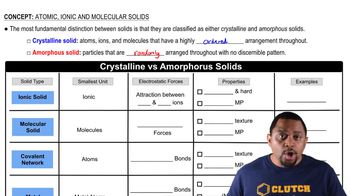Here are the essential concepts you must grasp in order to answer the question correctly.
Lewis Symbols
Lewis symbols, also known as Lewis dot diagrams, represent the valence electrons of an atom or ion. Each dot corresponds to a valence electron, and the arrangement of these dots around the chemical symbol indicates how the atom can bond with others. This visual representation helps in understanding the bonding behavior and reactivity of elements.
Recommended video:
Valence Electrons
Valence electrons are the outermost electrons of an atom and play a crucial role in chemical bonding. The number of valence electrons determines how an atom interacts with others, including the formation of covalent or ionic bonds. For sulfur (S), which is in group 16 of the periodic table, there are six valence electrons that can be represented in its Lewis symbol.
Recommended video:
Transition Metals Valence Electrons
Ionic vs. Neutral Atoms
Understanding the difference between ionic and neutral atoms is essential for drawing accurate Lewis symbols. A neutral atom has an equal number of protons and electrons, while an ion has gained or lost electrons, resulting in a charge. For example, the Lewis symbol for a neutral sulfur atom (S) will differ from that of a sulfide ion (S²⁻), which has gained two additional electrons.
Recommended video:
Crystalline vs Amorphous Solids
 Verified step by step guidance
Verified step by step guidance


